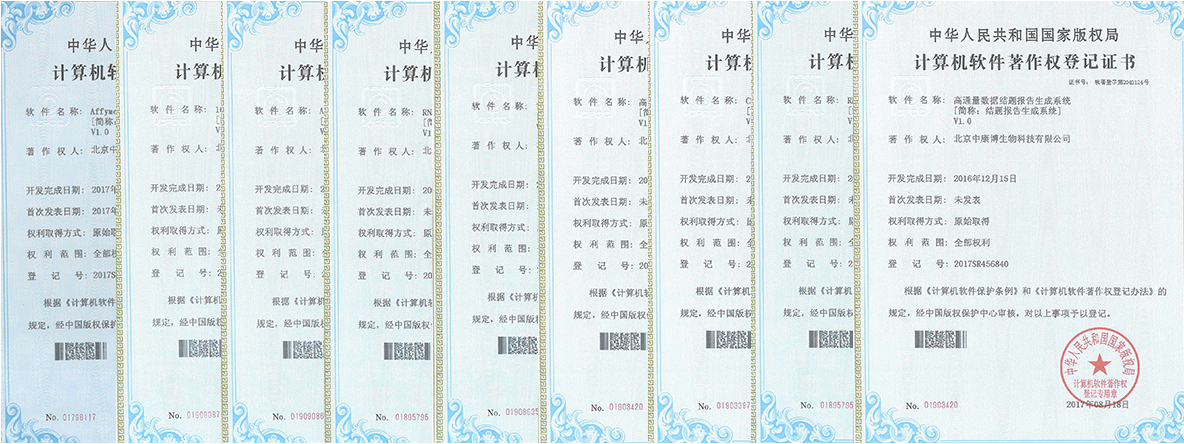中康博部分合作项目:
|
项目名称 |
金额(万) |
|
造血干细胞调控与再生机制研究 |
1200 |
|
北京大气污染对心肺疾病影响的暴露科学、毒理基因组学和环境流行病学综合研究(APIC-ESTEE) |
418.2 |
|
口腔医学 |
350 |
|
炎症微环境在骨骼肌损伤和再生中的作用机制 |
320 |
|
长链非编码RNA调控肝癌干细胞自我更新的分子机制研究 |
310 |
|
GALNT1调控膀胱癌干细胞自我更新机制研究 |
290 |
|
泛素介导的蛋白质降解在心肌肥厚中的作用及机制研究 |
290 |
|
谷氨酸化修饰的细胞调控机制研究 |
283 |
|
典型环境污染物与超细颗粒低水平联合暴露的心血管毒性及机制研究 |
280 |
|
炎症微环境在高血压心脏纤维化发病机制中的研究 |
280 |
|
炎症与细胞内外环境调控EMT的机制 |
270 |
|
趋化因子-受体信号通路调控心力衰竭的发病机制 |
254 |
|
NURF重塑复合物调控细胞重编程作用及表观遗传机制研究 |
200 |
|
循环系统 (心力衰竭的病理生理机制研究) |
200 |
|
心肌纤维化 |
200 |
|
WASH蛋白复合体调控自噬的功能与结构研究 |
200 |
|
有效中药复方功效的指征性物质基础研究 |
160 |
|
T淋巴细胞发育与功能 |
100 |
|
Pcid2调控造血干细胞向淋巴祖细胞谱系建立的分子机制研究 |
90 |
|
miR-223在腹主动脉瘤发展和干预中的作用及机制研究 |
80 |
|
α7尼古丁乙酰胆碱受体抗炎通路在高血压心脏重塑中保护作用及机制 |
73 |
|
表皮生长因子EREG在牙齿发育中的功能及调控机制研究 |
70 |
|
神经胶质瘤分子亚型发病机理和诊断方案研究 |
70 |
|
Foxp1对调节性T细胞和自身免疫病的调控作用 |
70 |
|
FOXL1抑制胰腺癌肿瘤发生的分子机制研究 |
70 |
|
肺炎链球菌寄居和感染中的唾液酸酶NanC-NanA双向调节机制研究 |
70 |
|
牙乳头不同生物矿化方向关键基因的研究 |
70 |
|
抑癌蛋白H2AX调控肺癌细胞凋亡的转录组学分析及其表观遗传调控机制研究 |
70 |
|
去泛素化酶UCHL1激活导致心力衰竭的病理生理机制 |
63 |
|
PM2.5在肺癌发生过程中的作用及其机制研究 |
60 |
|
CCP2对3型固有淋巴样细胞发育分化的调控作用及分子机制研究 |
60 |
|
Shh信号通路和维甲酸通路在维甲酸致小型猪腭裂中的调控机制研究 |
60 |
|
microRNA调控心肌细胞增殖能力转变过程的研究 |
60 |
|
Tsc1-mTORC1信号对正常和移植造血干细胞的调控作用 |
57 |
中康博合作伙伴
 中康博合作区域
中康博合作区域

中康博部分合作文章:
1. Shuo Wang et al. Regulatory Innate Lymphoid Cells Control Innate Intestinal Inflammation.
Cell. 2017.
2. Yulin Li et al. Cardiac Fibroblast-Specific Activating Transcription Factor 3 Protects Against Heart Failure by Suppressing MAP2K3-p38 Signaling.
Circulation. 2017.
3. Benyu Liu et al. Long noncoding RNA lncKdm2b is required for ILC3 maintenance by initiation of Zfp292 expression.
Nature immunology. 2017.
4. Benyu Liu et al. IL-7Rα glutamylation and activation of transcription factor Sall3 promote group 3 ILC development.
Nature Communication. 2017.
5. Di Wu et al. Lkb1 maintains Treg cell lineage identity.
Nature Communication. 2017.
Xue-Rui Wang et al. Inhibition of NADPH Oxidase–Dependent Oxidative Stress in the Rostral Ventrolateral Medulla Mediates the Antihypertensive Effects of Acupuncture in Spontaneously Hypertensive Rats.
Hypertension. 2017.
6. Comprehensive understanding of PM2.5 on gene and microRNA expression patterns in zebrafish (Danio rerio) model.
Science of the Total Environment. 2017.
7. Genome-wide transcriptional analysis of cardiovascular-related genes and pathways induced by PM2.5 in human myocardial cells.
Environ Sci Pollut Res. 2017.
8. Gene expression profiles and bioinformatics analysis of human umbilical vein endothelial cells exposed to PM2.5.
Chemosphere. 2017.
9. Microarray-based bioinformatics analysis of the combined effects of SiNPs and PbAc on cardiovascular system in zebrafish.
Chemosphere. 2017.
10. Comprehensive gene and microRNA expression profiling on cardiovascular system in zebrafish co-exposured of SiNPs and MeHg.
Science of the Total Environment. 2017.
11. Ling Feng et al. Integrated Analysis of Long Noncoding RNA and mRNA Expression Profile in Advanced Laryngeal Squamous Cell Carcinoma.
PLOS One. 2016.
12. Ling-zhao Meng et al. Aberrant Expression Profile of Long Noncoding RNA in Human Sinonasal Squamous Cell Carcinoma by Microarray Analysis.
BioMed Research International. 2016.
13. Yingying Su et al. Genome-wide DNA methylation profile of developing deciduous tooth germ in miniature pigs.
GMC Genomics. 2016
14. Inflammatory response and blood hypercoagulable state induced by low level co-exposure with silica nanoparticles and benzo[a]pyrene in zebrafish (Danio rerio) embryos.
Chemosphere. 2016. IF=3.698.
15. Pingping Zhu et al. LncBRM initiates YAP1 signalling activation to drive self-renewal of liver cancer stem cells.
Nature Communication. 2016.
16. Genome-wide transcriptional analysis of silica nanoparticle-induced toxicity in zebrafish embryos.
Toxicology Research. 2016.
17. Pingping Zhu et al. ZIC2-dependent OCT4 activation drives self-renewal of human liver cancer stem cells.
J Clin Invest. 2015.
18. Yanying Wang et al. The Long Noncoding RNA lncTCF7 Promotes Self-Renewal of Human Liver Cancer Stem Cells through Activation of Wnt Signaling.
Cell Stem Cell. 2015 .
19. Low-dose exposure of silica nanoparticles induces cardiac dysfunction via neutrophil-mediated inflammation and cardiac contraction in zebrafish embryos.
Nanotoxicology. 2015.
20. Xia Wang et al. MicroRNA Let-7i Negatively Regulates Cardiac Inflammation and Fibrosis.
Hypertension. 2015.
21. Yingyu Sun et al. A glioma classification scheme based on coexpression modules of EGFR and PDGFRA.
PNAS. 2014 .
22. Fu Wang et al. Stage-specific differential gene expression profiling and functional network analysis during morphogenesis of diphyodont dentition in miniature pigs, Sus Scrofa.
GMC Genomics. 2014.
23. Rui Dong et al. Comparison of Long Noncoding RNA and mRNA Expression Profiles in Mesenchymal Stem Cells Derived from Human Periodontal Ligament and Bone Marrow.
BioMed Research International. 2014.
24. Dong Ni et al. Downregulation of FOXO3a Promotes Tumor Metastasis and Is Associated with Metastasis-Free Survival of Patients with Clear Cell Renal Cell Carcinoma.
Clinical Cancer Research. 2014.
25. Yong Yang et al. The Noncoding RNA Expression Profile and the Effect of lncRNA AK126698 on Cisplatin Resistance in Non-Small Cell Lung Cancer Cell.
PLOS One. 2013.
26. Chengrong Lu et al. Genome-wide transcriptional analysis of apoptosis-related genes and pathways regulated by H2AX in lung cancer A549 cells.
Apoptosis.2013.
27. YI CUI et al. MicroRNA-181b and microRNA-9 Mediate Arsenic-Induced Angiogenesis via NRP1.
CellularPhysiology. 2012.
28. Xia P et al. DNA sensor cGAS-mediated immune recognition. 2016.
29. Pengyan Xia et al. Sox2 functions as a sequence-specific DNA sensor in neutrophils to initiate innate immunity against microbial infection.
Nature Inmmunology. 2015
30. Shuo Wang et al . Autophagy and cell reprogramming. 2014.
31. Xia P. IRTKS negatively regulates antiviral immunity through PCBP2 sumoylation-mediated MAVS degradation.
Nat Commun. 2015.
32. Zhu P et al. lnc-β-Catm elicits EZH2-dependent β-catenin stabilization and sustains liver CSC self-renewal.
Nat Struct Mol Biol. 2016.
33. Fang JZ et al. Hepatocyte-Specific Arid1a Deficiency Initiates Mouse Steatohepatitis and Hepatocellular Carcinoma.
PLoS One. 2015.
34. Wang S. Natural Killer-like B Cells Prime Innate Lymphocytes against Microbial Infection.
Immunity. 2016.
35. Wang S. FoxO1-mediated autophagy is required for NK cell development and innate immunity.
Nat Commun. 2016.
36. Zhu P et al. C8orf4 negatively regulates self-renewal of liver cancer stem cells via suppression of NOTCH2 signalling.
Nat Commun. 2015.
37. Li C. The C228T mutation of TERT promoter frequently occurs in bladder cancer stem cells and contributes to tumorigenesis of bladder cancer.
Oncotarget. 2015.
38. Wu S et al. Novel variants in MLL confer to bladder cancer recurrence identified by whole-exome sequencing.
Oncotarget. 2016.
39. Li M et al. T-cell immunoglobulin and ITIM domain (TIGIT) receptor/poliovirus receptor (PVR) ligand engagement suppresses interferon-γ production of natural killer cells via β-arrestin 2-mediated negative signaling.
J Biol Chem. 2014.
40. Ye B et al. Cytosolic carboxypeptidase CCP6 is required for megakaryopoiesis by modulating Mad2 polyglutamylation.
J Exp Med. 2014.
41. Li C. GALNT1-Mediated Glycosylation and Activation of Sonic Hedgehog Signaling Maintains the Self-Renewal and Tumor-Initiating Capacity of Bladder Cancer Stem Cells.
Cancer Res. 2016.
42. Xia P et al. Glutamylation of the DNA sensor cGAS regulates its binding and synthase activity in antiviral immunity.
Nat Immunol. 2016.
43. Xia P et al. Insulin-InsR signaling drives multipotent progenitor differentiation toward lymphoid lineages.
J Exp Med. 2015.
44. Yang X et al. Crystal structures of YfiR from Pseudomonas aeruginosa in two redox states.
Biochem Biophys Res Commun. 2015.
45. Chen J et al. The endoplasmic reticulum adaptor protein ERAdP initiates NK cell activation via the Ubc13-mediated NF-κB pathway.
J Immunol. 2015.
46. Yang X et al. Molecular mechanism for self-protection against the type VI secretion system in Vibrio cholerae. Acta Crystallogr D Biol Crystallogr. 2014.
47. Xu M et al. Structural insights into the regulatory mechanism of the Pseudomonas aeruginosa YfiBNR system. Protein Cell. 2016.
48. Ye B et al. Pcid2 inactivates developmental genes in human and mouse embryonic stem cells to sustain their pluripotency by modulation of EID1 stability. Stem Cells. 2014.
49. Xia P et al. WASH is required for the differentiation commitment of hematopoietic stem cells in a c-Myc-dependent manner. J Exp Med. 2014 .
50. Wang S,et al. Transient activation of autophagy via Sox2-mediated suppression of mTOR is an important early step in reprogramming to pluripotency. Cell Stem Cell. 2013.
51. Li C. BCMab1, a monoclonal antibody against aberrantly glycosylated integrin α3β1, has potent antitumor activity of bladder cancer in vivo. Clin Cancer Res. 2014.
52. Qu Q. et al. Structural characterization of the self-association of the death domain of p75(NTR.). PLoS One. 2013.
53. Wang L. Identification of SERPINB1 as a physiological inhibitor of human granzyme H. J Immunol. 2013.
54. YONG YANG et al. Differences in gene expression profles and carcinogenesis pathways involved in cisplatin resistance of four types of cancer. ONCOLOGY REPORTS.
55. Wang L. Structural insights into the substrate specificity of human granzyme H: the functional roles of a novel RKR motif. J Immunol. 2017.
56. Xia P et al. WASH inhibits autophagy through suppression of Beclin 1 ubiquitination. EMBO J. 2013.
57. Xia P et al. Erratum: Glutamylation of the DNA sensor cGAS regulates its binding and synthase activity in antiviral immunity. Nat Immunol. 2016.
58. Yang Z al. Single-cell Sequencing Reveals Variants in ARID1A, GPRC5A and MLL2 Driving Self-renewal of Human Bladder Cancer Stem Cells. Eur Urol. 2017 .
60. Tang H et al. Granzyme H of cytotoxic lymphocytes is required for clearance of the hepatitis B virus through cleavage of the hepatitis B virus X protein. J Immunol. 2012.
61. Yan X et al. Mesenchymal stem cells promote hepatocarcinogenesis via lncRNA-MUF interaction with ANXA2 and miR-34a. Cancer Res. 2017.
62. Zheng X et al. TRIM25 Is Required for the Antiviral Activity of Zinc Finger Antiviral Protein. J Virol. 2017.
63. Guo Y et al. Valosin-containing protein cleavage by granzyme K accelerates an endoplasmic reticulum stress leading to caspase-independent cytotoxicity of target tumor cells. J Immunol. 2017.
64. Xia P et al. WASH maintains NKp46+ ILC3 cells by promoting AHR expression. Nat Commun. 2017.
65. Wang S et al. Natural-Killer-like B Cells Function as a Separate Subset of Innate B Cells. Immunity. 2017.
66. Hu D et al. Cleavage of survivin by Granzyme M triggers degradation of the survivin-X-linked inhibitor of apoptosis protein (XIAP) complex to free caspase activity leading to cytolysis of target tumor cells. J Biol Chem. 2010.
67. Wu L et al. Structural basis for proteolytic specificity of the human apoptosis-inducing granzyme M. J Immunol. 2009.
68. Hua G et al. Ignition of p53 bomb sensitizes tumor cells to granzyme K-mediated cytolysis. J Immunol. 2009.
69. Ye B et al. Suppression of SRCAP chromatin remodelling complex and restriction of lymphoid lineage commitment by Pcid2. Nat Commun. 2017.
70. Zhang H et al. Granulysin induces cathepsin B release from lysosomes of target tumor cells to attack mitochondria through processing of bid leading to Necroptosis. J Immunol. 2009 .
71. Shuai Zhang et al. Deficiency of γ&T cells protects against abdominal aortic aneurysms by regulating phosphoinositide 3-kinase/AKT signaling. Journal of Vascular Surgery. 2016.
72. Xiaoyu Kan et al. Deficiency of IL-12p35 improves cardiac repair after myocardial infarction by promoting angiogenesis. Cardiovascular Research. 2016.
73. T-T Li et al. Endoplasmic reticulum stress in bone marrow-derived cells prevents acute cardiac inflammation and injury in response to angiotensin II. Cell Death and Disease. 2016.





